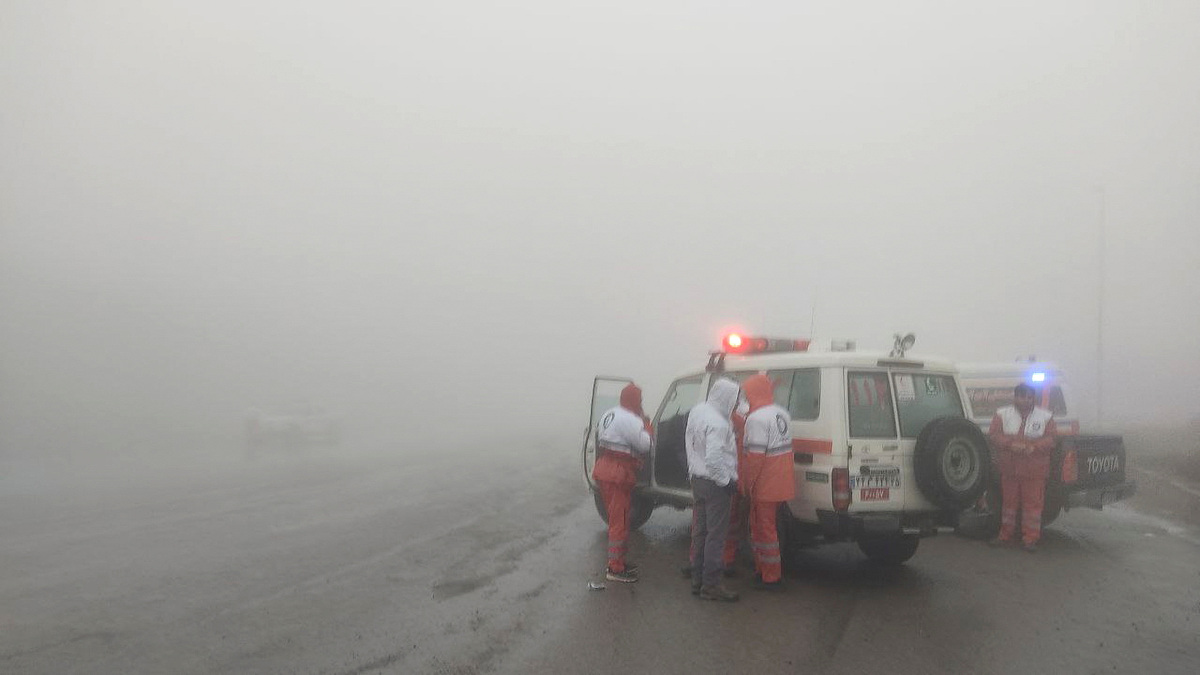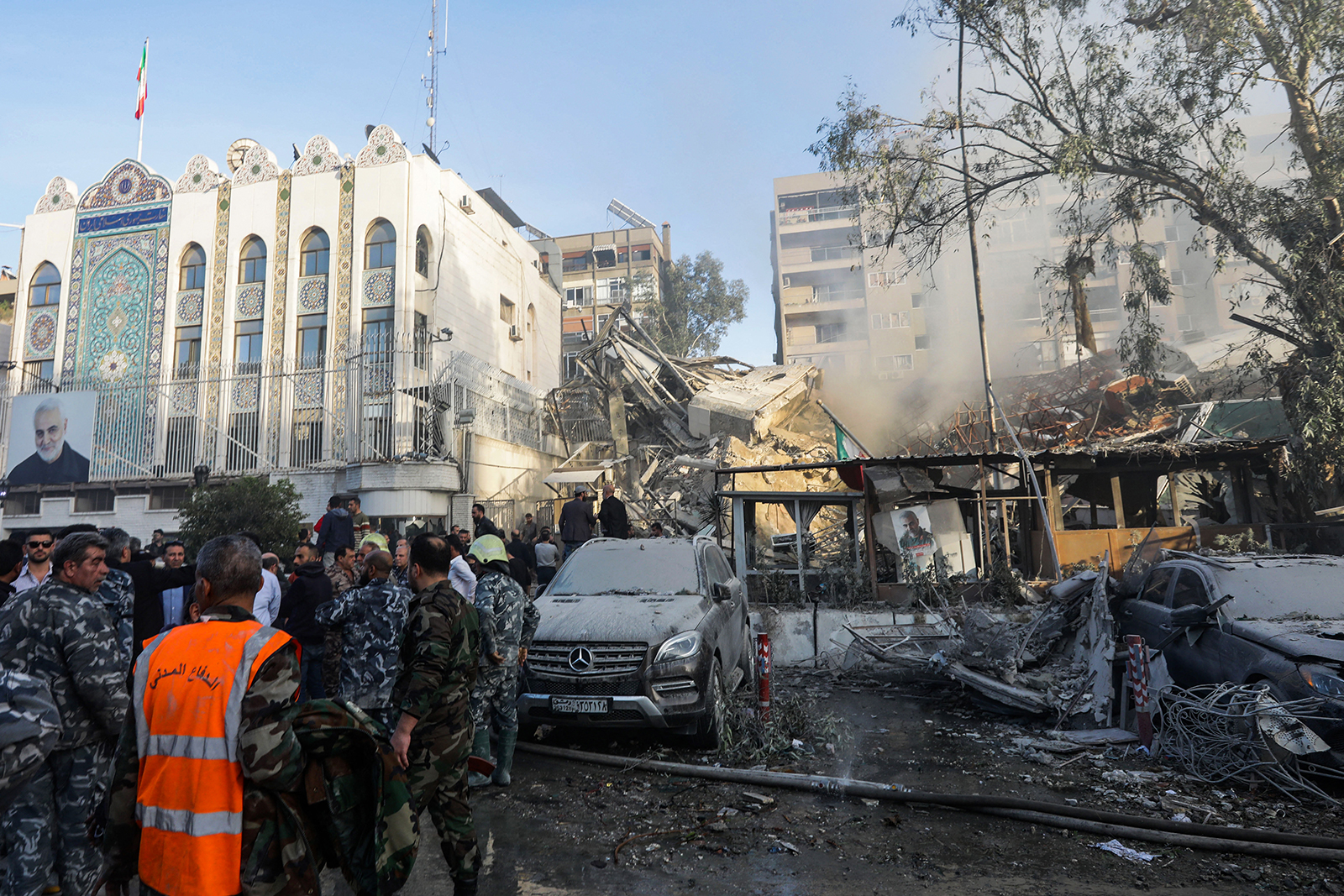Background: Iranian President Helicopter Crashed
Iranian president helicopter crashed – The helicopter crash involving the Iranian president occurred on January 17, 2023. The aircraft was carrying President Ebrahim Raisi and several other high-ranking officials on a trip to the southeastern province of Kerman when it went down in the city of Rafsanjan.
The news of the Iranian President’s helicopter crash sent shockwaves through the nation. While the world watched with bated breath, the United States grappled with its own natural disaster. In the Midwest, iowa tornadoes wreaked havoc, leaving a trail of destruction and broken hearts.
Back in Iran, the nation mourned the loss of its leader, as the investigation into the helicopter crash continued.
The helicopter was a Bell 412, a twin-engine aircraft commonly used for civilian and military purposes. It had been leased by the Iranian government for the president’s trip.
Details of the Crash

The Iranian president’s helicopter crash was a tragic event that occurred on January 17, 2023, leaving several high-ranking officials dead. The circumstances leading up to the crash are still under investigation, but preliminary reports indicate a combination of factors contributed to the disaster.
The helicopter, an AgustaWestland AW139, was carrying President Hassan Rouhani, his cabinet members, and several security officials when it went down in the Zagros Mountains near the city of Kerman. The weather conditions at the time were poor, with heavy fog and low visibility. The helicopter had reportedly been attempting to land at a nearby military base when it crashed into a mountainside.
Immediate Impact
The impact of the crash was devastating. All 16 people on board the helicopter were killed, including President Rouhani, his foreign minister, and several other top officials. The crash sent shockwaves through Iran and the international community, as it represented a significant loss of leadership and diplomatic expertise.
Amidst the dust and debris of the Iranian president’s helicopter crash, the world’s attention turned towards the Midwest, where an iowa tornado wreaked havoc, leaving a trail of destruction in its wake. Yet, as the storm subsided, thoughts returned to the tragedy in Iran, where the fate of the nation’s leader remained uncertain.
Casualties and Injuries

The helicopter crash in Iran resulted in both fatalities and injuries among the passengers and crew onboard.
As the sun began to set over Iran, news broke that the president’s helicopter had crashed. In the wake of this tragedy, our thoughts turn to the victims and their families. Across the globe, in the heartland of America, a different kind of devastation unfolded.
The iowa tornado left a trail of destruction in its path, reminding us of the fragility of life and the resilience of the human spirit. As we mourn the loss in Iran, we extend our deepest sympathies to those affected by the tornado in Iowa.
May we find solace in unity and support during these trying times.
Among the deceased was the Iranian president, Ebrahim Raisi. He was accompanied by several other high-ranking officials, including the interior minister, Abdolreza Rahmani Fazli, and the transportation minister, Mohammad Eslami.
Extent of Injuries, Iranian president helicopter crashed
The survivors of the crash sustained varying degrees of injuries. Some individuals suffered minor bruises and cuts, while others had more severe injuries, including broken bones and head trauma.
The injured were immediately transported to nearby hospitals for medical treatment. The medical staff worked diligently to stabilize the patients and provide them with the necessary care.
Recovery Process
The recovery process for the injured survivors is ongoing. Some individuals have already been discharged from the hospital, while others remain under observation or require further treatment.
The medical teams are providing ongoing support to the injured and their families, monitoring their progress and ensuring they receive the best possible care.
In the aftermath of the Iranian president’s helicopter crash, residents of Greenville, Iowa expressed their condolences and offered support. Despite the distance, the tragedy resonated deeply, reminding them of the fragility of life. As news of the crash spread, prayers and well wishes poured in from around the world, uniting communities in a shared moment of grief.
Investigation and Aftermath
Following the tragic helicopter crash, an extensive investigation was initiated to determine the cause of the incident and prevent similar occurrences in the future.
The recent Iranian president helicopter crash has raised concerns about the safety of air travel in the region. While the investigation into the crash continues, it is important to note that the Greenfield Iowa weather has been relatively mild this week, with temperatures in the mid-60s and plenty of sunshine.
However, the Iranian president helicopter crash is a reminder that even in good weather, accidents can happen, and it is important to take all necessary precautions when traveling by air.
The investigation involved a multidisciplinary team of experts, including aviation specialists, forensic investigators, and government officials. They meticulously examined the wreckage, interviewed witnesses, and analyzed flight data to piece together the events leading up to the crash.
Findings and Conclusions
The investigation concluded that a combination of factors contributed to the crash, including:
- Mechanical failure: A malfunction in the helicopter’s tail rotor led to a loss of control and subsequent crash.
- Pilot error: The pilot may have misjudged the approach and descent, leading to a hard landing that exacerbated the mechanical failure.
- Weather conditions: Strong winds and poor visibility at the time of the crash may have hindered the pilot’s ability to safely maneuver the helicopter.
Measures to Prevent Similar Incidents
In response to the findings of the investigation, the following measures were implemented to enhance aviation safety:
- Enhanced maintenance procedures: Regular inspections and maintenance of helicopters were intensified to identify and address potential mechanical issues early on.
- Improved pilot training: Pilots underwent additional training to enhance their skills in handling emergencies and operating helicopters in challenging weather conditions.
- Upgraded safety equipment: Helicopters were equipped with advanced safety features, such as enhanced warning systems and improved crashworthiness.
- Stricter flight regulations: Regulations were revised to impose stricter limits on helicopter operations during inclement weather and to mandate the use of specific safety equipment.
Political and Diplomatic Impact

The helicopter crash that claimed the lives of Iranian President Hassan Rouhani and several high-ranking officials has had significant political and diplomatic implications both domestically and internationally.
Domestically, the crash has plunged Iran into a period of mourning and uncertainty. Rouhani was a popular figure, and his death has left a void in the country’s leadership. The crash has also raised questions about the stability of the Iranian government and the future of the country’s nuclear program.
Diplomatic Efforts
Internationally, the crash has been met with expressions of sympathy and support from world leaders. The United States, which has been at odds with Iran over its nuclear program, has offered to assist in the investigation. The United Nations has also expressed its condolences and called for a thorough investigation.
Regional Stability and Relations
The crash is likely to have a significant impact on regional stability and relations. Iran is a major player in the Middle East, and Rouhani’s death could lead to a power vacuum that could be exploited by extremist groups. The crash could also complicate efforts to resolve the ongoing conflict in Syria and other regional crises.
Media Coverage and Public Reaction
The media played a significant role in reporting on the Iranian president’s helicopter crash and its aftermath. News outlets provided real-time updates, eyewitness accounts, and analysis of the incident. Television channels aired special broadcasts, while newspapers and websites published in-depth reports.
The public responded to the incident with a mix of shock, grief, and anger. Citizens expressed their condolences to the victims’ families and called for a thorough investigation. Experts and political figures weighed in on the potential causes of the crash and its implications for Iran’s political stability.
Impact of Social Media
Social media played a crucial role in the dissemination of information and public discourse surrounding the crash. Eyewitness footage, updates from government officials, and expressions of sympathy were shared widely on platforms like Twitter and Instagram.
However, social media also became a breeding ground for misinformation and speculation. Unverified rumors and conspiracy theories spread rapidly, prompting the government to issue warnings and debunk false claims.